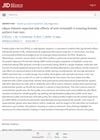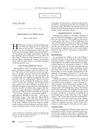Real-World Quantification of Treatment Response to Low-Dose Oral Minoxidil in Non-Scarring Alopecia
October 2025
in “
Clinical and Experimental Dermatology
”
TLDR Low-dose oral minoxidil significantly improves hair density in non-scarring alopecia.
This retrospective study evaluated the effectiveness of low-dose oral minoxidil (LDOM) in treating non-scarring alopecias, specifically androgenetic alopecia and telogen effluvium, in 60 patients. Using AI-powered HairMetrix imaging, the study observed significant improvements in hair density over a period of 4-8 months. The findings highlight the potential of LDOM to improve hair density in real-world settings, utilizing a standardized and non-invasive imaging method to quantify treatment response.




